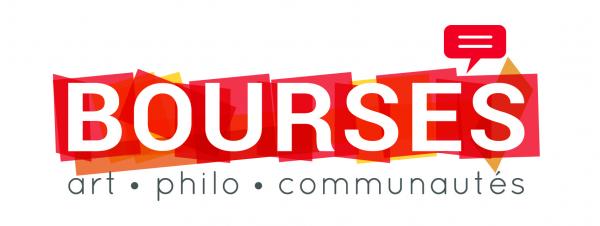Photo: © James Galwey, Marie-Pierre Gadoua et Alexandra Pronovost pour Exeko
By James Galwey, mediator
James, who began as volunteer before becoming a mediator at Exeko, speaks today about the idAction project at Northern Quebec Module.
Every year, Inuit of all ages fly down to Montreal for medical treatments not available in Nunavik. Usually accompanied by a family member, they are lodged at the Northern Quebec Module (NQM), an Inuit welcome centre housed in a downtown YMCA. Some of the Inuit are comfortable in Montreal, they know the city and enjoy it but for others, it is a source of stress. For periods varying from one week to several months, they have to deal with their illness in a large, unknown city, far from home and their community. They patiently wait their ticket back to the great outdoors up north: the sea, rivers, mountains and tundra... hunting, fishing, and their beloved ‘country food’, the muktuk or artic char.
At the beginning of 2015, Exeko started to hold cultural mediation workshops at the YMCA. The objectives of the workshops were to promote a space for reflection, discussion, creativity and positive socialization among Inuit participants, around the theme of a home away from home in Montreal. The residents have a lot of free time between the hospital visits so what is there to do? Do they feel welcome in Montreal? Is there anything they would like to see in the city?
Thus, every Tuesday evening from 7.00PM to 10.00PM, two Exeko mediators and an NQM member, made a home in one of the YMCA rooms. We would set up the tables and chairs, get out the paints, crayons, modeling clay, maps and sewing kits, put on some Inuit music and go look for participants.

One of the major hurdles was the fact every week new people would arrive and others would leave so the workshops could not benefit from familiarity; it was difficult to build upon the workshop from the previous week. One week we would have lots of eager participants and the next week, they had returned to Nunavik. The challenge therefore was to find new participants every week, and to put on workshops for people that knew nothing of what happened the previous week.
It should be noted that the YMCA also houses PRAIDA, an organization that helps recently arrived refugees. It is their first port of call before taking an apartment in the city, looking for work and making a new life. Whenever possible, we would try for a cultural mix and integrate some of the refugees in our workshops. Many of the refugees spoke no French and very little English but gathered around the table, they would interact with the Inuit participants and talk about different ways to sew, war in their country of origin, the cold (this is Quebec, after all), musical traditions and food. The workshops always seemed to run much better when refugees joined the group.
One of the first things we became aware of was that many Inuit did not feel particularly welcome in Montreal. The city does not have a glowing reputation; there exists a certain amount of wariness about coming south. The Inuit miss their tightknit communities, the food, and the landscape. It does not help that although the NQM workers are receptive and warm, the YMCA building is not: similar to a hospital, it is made up of long corridors, beige paint schemes, locked doors and closed rooms. It was decided to sew a number of colourful, inclusive welcome banners for the entrance hall; have participants stitch words of welcome and pictures onto a large piece of cloth and hang them up for people to see. This was something that could be an ongoing project, allowing people to make something that could be easily added upon by future participants.

Many Inuit women are very good at sewing, as many still make their own clothes, so it was felt this type of activity would have an appeal. The idea would also feed perfectly into the Exeko mission of intellectual mediation. It is a relaxing moment where people get together in a circle around a group project, chat and exchange ideas. As the months passed and the banner took shape, recently arrived Inuit participants working on the cloth would notice a previous message or drawing and recognise its author.
Looking with amusement at the stitch work of one of the female mediators, an elderly Inuit woman joked that with sewing skills like that she would never find a husband.
At the same time as one of the mediators managed the room, the other would show documentaries in the nearby TV and Internet room, reserved exclusively for the Inuit. Usually, people simply watch the usual television programming but we screened NFB films shot in the Far North and held discussions about them afterwards. Is the portrayal of their culture accurate? Has their lifestyle changed since the film was made? The NFB began to take an interest in the Canadian artic during the very first years of its existence. As early as the 1940s, film crews were sent to capture images of the Inuit people. More than two hundred films were produced but sadly, many Inuit have not seen these films. It was joy to watch the films with them. There was always someone in the room who would know one of the faces in the film. On a more personal note, I believe the participants were quite proud at seeing themselves and their culture portrayed on film.

During the summer months, the mediators would take tables outside, in front of the YMCA building and set them up with crayons, paints and pads of paper. Many Inuit at the YMCA hang around outside and smoke so we thought it would be a good idea to join them. And maybe get to talk to some Inuit men. For the most part it was women and children who would come to our workshops. Men would poke their head inside, see the women and children, and then leave. Outside, however, while smoking a cigarette, it was easier to mingle and discussions were easier to come by – especially with the teenagers. I learnt about life in the North, living conditions, hunting expeditions, what it means to be a teenage boy in Nunavik, video games, the social challenges facing people up North, films, and food. Another positive point was that Inuit people living in the Montreal (and who are not allowed into the YMCA) would drop by to see friends outside. Their presence would often make conversations between the mediators and the recently arrived Inuit participants easier as the Montreal Inuit were on friendly terms with the mediators.
Exeko would also organize trips outside of the YMCA. Participants were taken ice fishing on the St-Laurent and Inuit art exhibitions at the museum. The second to last outing took place at the Museum of Fine Arts. We took thirten people, including a recently arrived Kurdish family of five, to see Inuit throat singers performing with an Iranian drummer around ceramic works made of Nunavik clay. It was a true meeting of cultures, the perfect social mix.

All in all, the workshops were an extremely positive experience and the mediators learned a lot about Inuit culture.
For a majority of Inuit, the only people they meet outside of their community when travelling south are the NQM and hospital personnel. They stay then go, and rarely do they mix with the general Montreal population. As we quickly understood, the Inuit are slightly wary the city and and us, the Qallunaat (Inuit word for white people) and our strange Western ways. But whatever else the Exeko workshops may, or may not have achieved, I can honestly say that they allowed for a real connection with the visiting Inuit and complemented the excellent work of the NQM. Hopefully, memories and images of our interactions will remain and when the participants do back to Nunavik, they will have a few favourable things to say about their stay. There is so much misunderstanding between the cultures but from small seeds, big trees grow and maybe, just maybe, word will spread that not everything in the south is necessarily bad.

The most surprising and significant aspect of our workshops in terms of social mixing was that whenever the refugees did participate, the Inuit would assume a different role. Their demeanour changed; they were more talkative, curious, and they would pose questions (something they rarely did when talking to the mediators) and tell the refugees about this country and how best to survive its winters (this is Quebec, after all!) They became the official welcoming committee; they were welcoming the refugees to their country. As one of the Inuit workshop participant’s remarked: it seems only fitting that the first people with whom the refugees come into contact are the first inhabitants of this land, the Inuit.
Le projet idAction @Module du Nord Québécois est soutenu par l'Arrondissement de Ville-Marie.



























 Laurier
Laurier